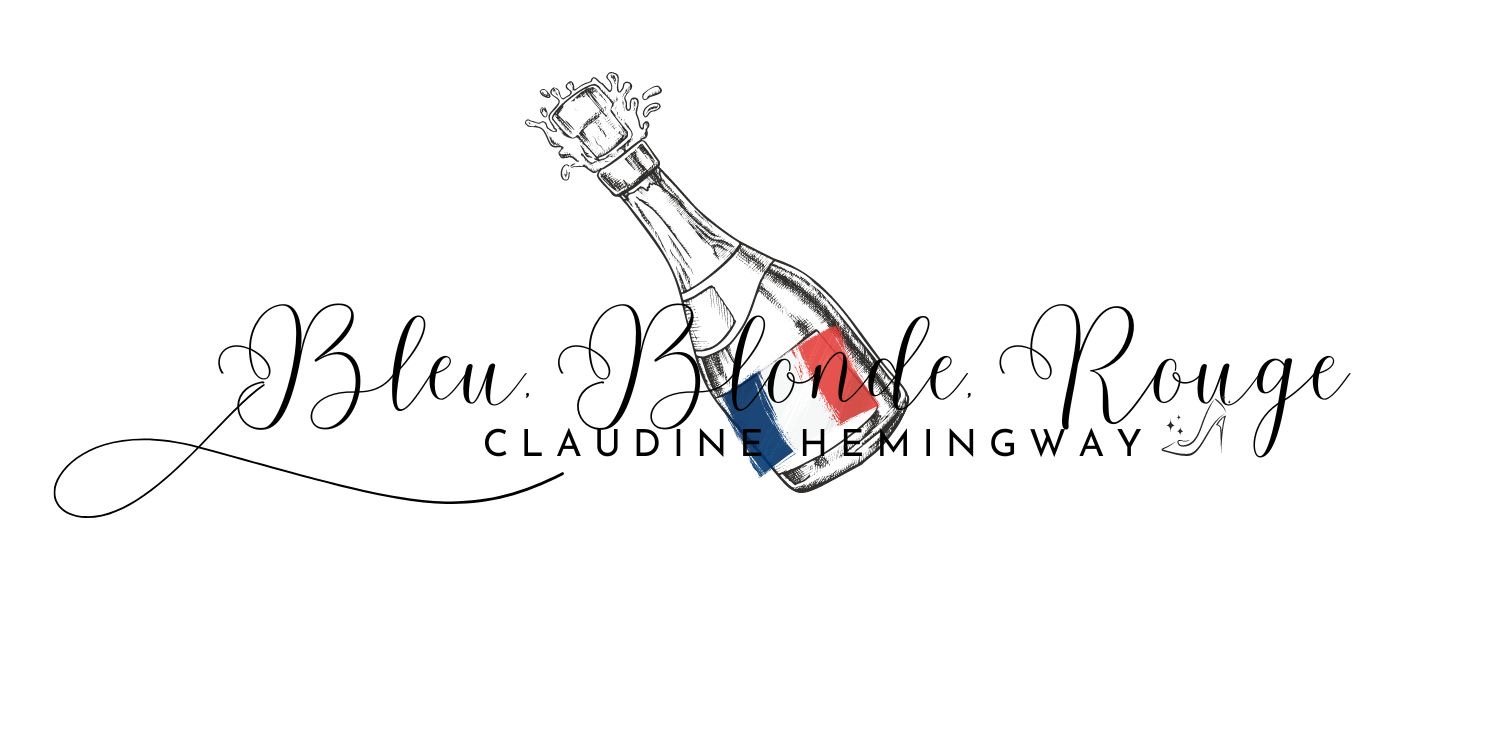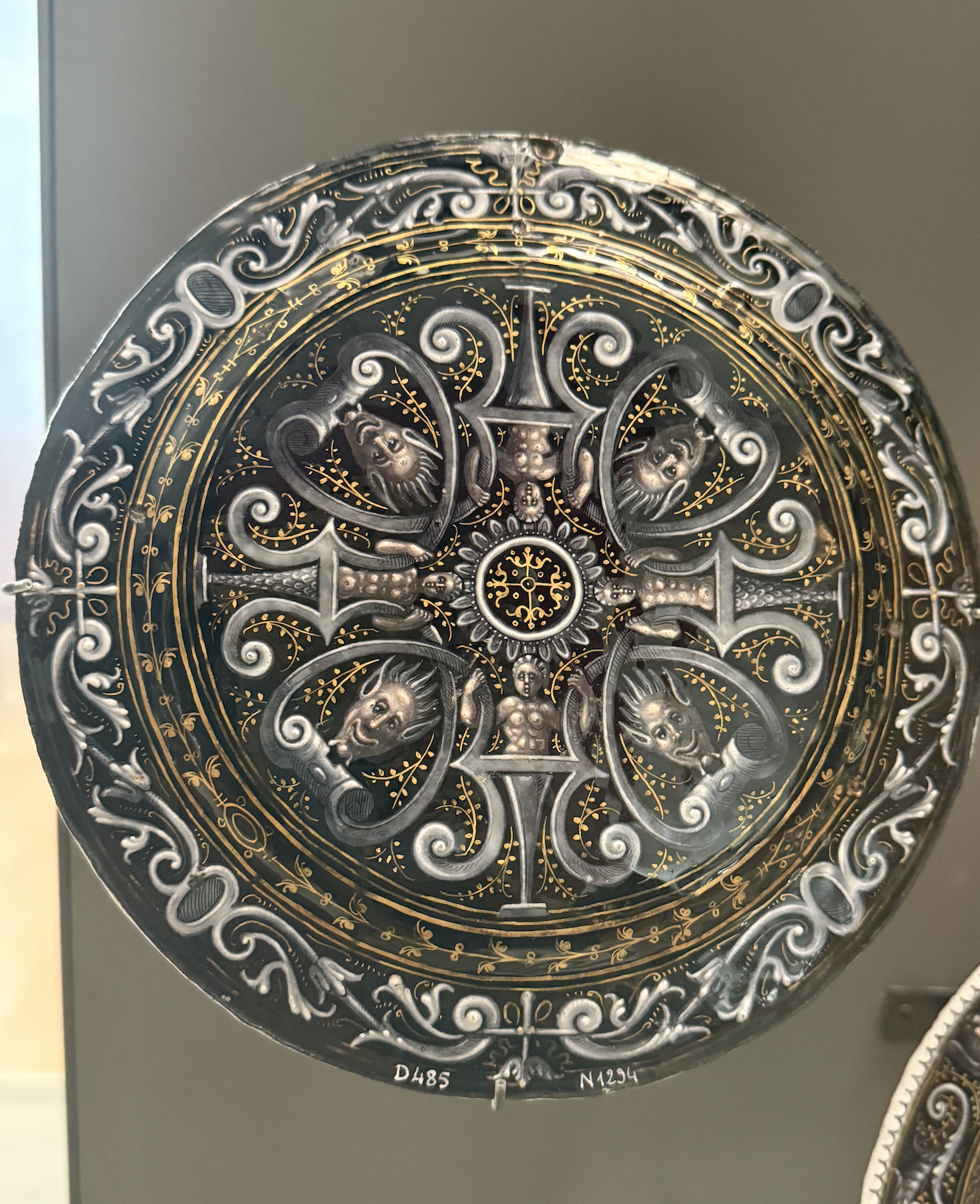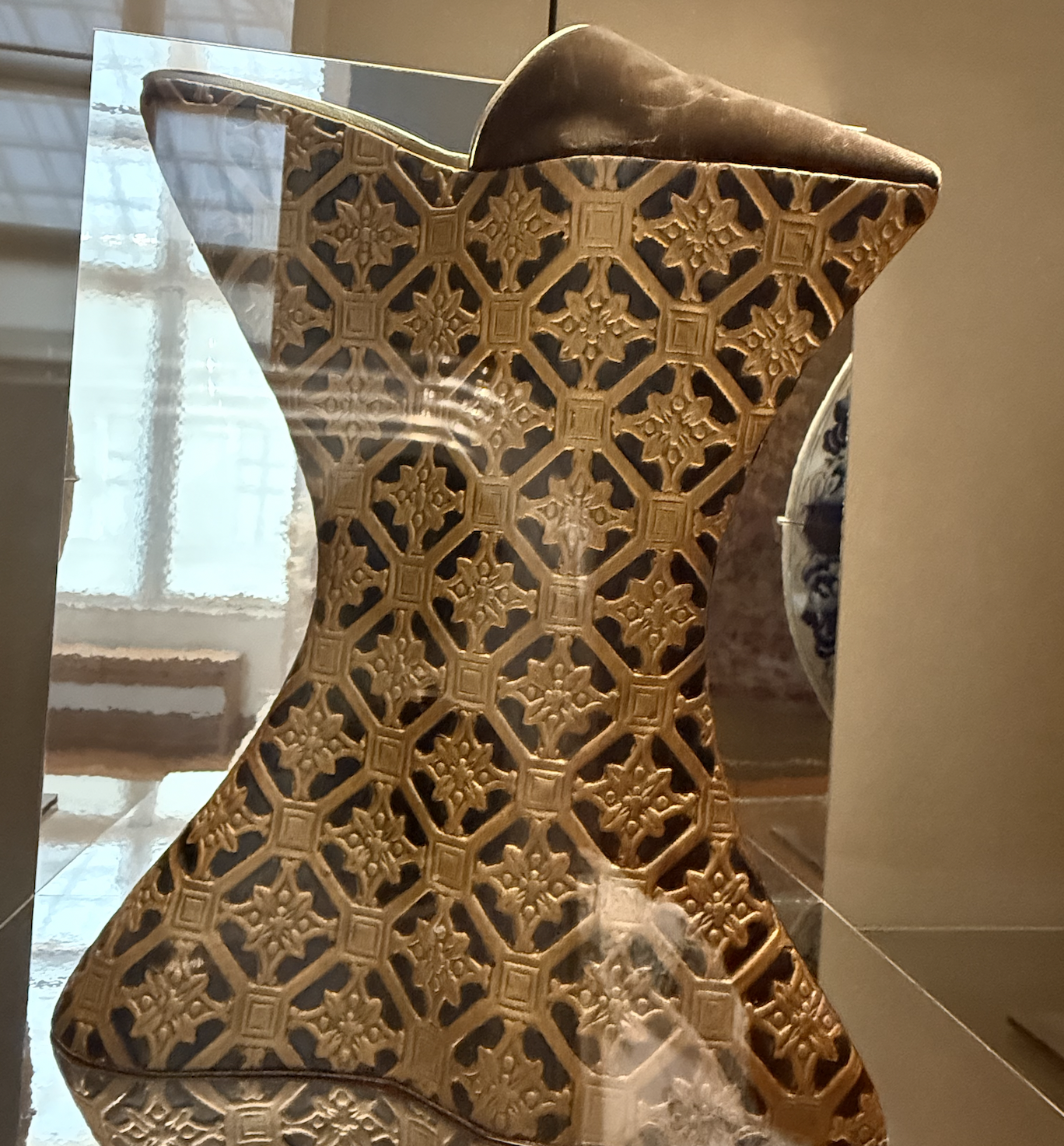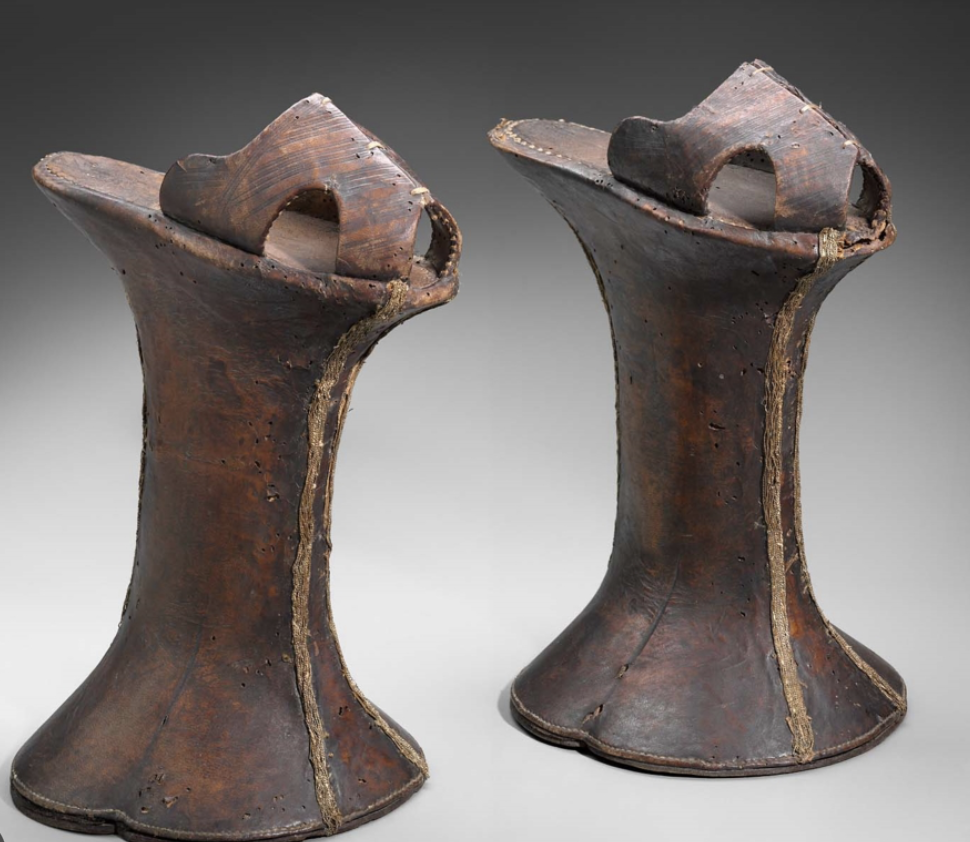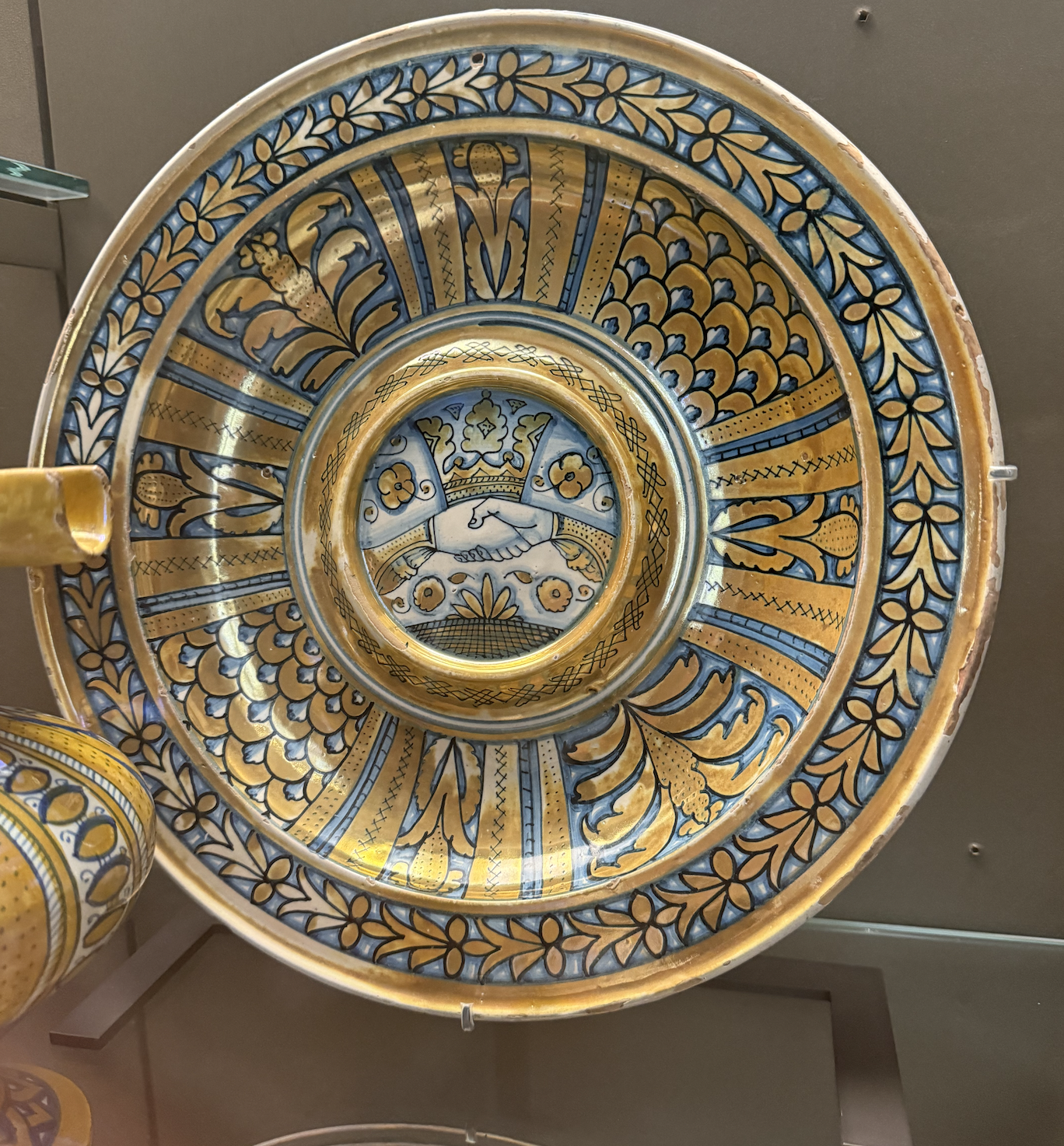Viktor Horsting and Rolf Snoeren, two Dutch designers, met at the ArtEZ Arnhem Academy of Art and created their label in 1989. Avant-garde designers have incorporated a touch of satire and humor into each of their collections since their debut Haute Couture collection in 1998.
The dress featured in the Louvre Couture exhibit from the autumn/winter 2021-2022 Haute Couture collection appears quite chic. The Dutch duo created the entire collection around royalty, but not in the sense you may think. In real life, the Crown and an interview with a rebuked royal were all the talk of pop culture and seeped onto the runway.
The collection was a parade of queens and princesses, who had created themselves. Each look had three pieces: a dress, a sash, and an oversized coat. Many were made with the addition of Swarovski crystals, fake fur, and giant plastic gems. Sashes included” love like a queen”,” queen of the night", “always wear your invisible crown”, and “build castles in the air”.
The dress we see at the Louvre appears to be the kind a true royal might wear. The royal navy blue and gold Lurex cloqué jacquard fabric is covered in embroidered and padded roses. The climbing vine roses are complete with red thorns. Braided and macramé details on the shoulders, neck, and waist, and edged with pearls and Swarovski crystals.
The exhibition has been such a success that the Louvre extended it through August 24. The exhibit came together for many reasons, one of which is to shed light on the fantastic objets d’art collection of the Louvre. Although it may be missed by those just coming to take photos of the fashion, hopefully, a few will return to explore the hundreds of years of history more deeply.
The glass cases of this salle are filled with ceramic and Limoges decorative plates dating to the 15th and 16th centuries. Many of these plates were created in the mid-16th century when the production and popularity were at their peak. Early painted enamel was predominantly used for religious pieces in the Middle Ages. Limoges enamel originated in the 12th century in the city of Limoges, located in the Haute-Vienne department. It fell out of fashion and almost disappeared in the 14th century until Louis XII brought it back to life. Through François I and Henri II, the heyday of enameled metal appeared as a sign of great wealth and exclusivity.
The middle name of 16th-century artist Léonard Limosin might as well have been Limoges. No other artist is more closely associated with the craft than he was, and many of his pieces are featured in this section of the Louvre. Don’t miss the beautiful altarpieces of Sainte-Chapelle, created in 1248. Pierre Reymond studied under Limosin and became an often sought-after artist, making items for the wealthy families of France.
To bring out the luxurious fabric of the Viktor & Rolf dress, the enamel plates just opposite also mirror the golden curves on a dark background.
At the height of their popularity, enamel plates featuring the months of the year were produced for wealthy clients to be displayed in curio cabinets. The theme, popular during the Renaissance, depicted each month of the year with symbolism, astrology, and allegories, and featured laborers of that season and month. The theme goes back even farther to the Middle Ages, where you can find the astrological symbols and trades on the edges of the portail de la Vierge of Notre Dame—as well as early calendars and books of hours.
The collection of plates within the Louvre, created by Pierre Reymond for Pierre I Séguier, the president of the parliament, was donated to the Louvre in 1922 by Baroness Adèle de Rothschild. The set of five, each includes the coat of arms of Séguier, including March. On the front of the plate, created in 1566, the center features three men engaged in hunting and pruning the vineyard vines. A body of water and an island are in the background, and two dogs are ready to leap into the woods. At the top of the plate, two figures represent the zodiac symbol of Gemini, which would put this scene in May.
The back of the plate is also decorated in grisaille with scrolls, vegetables, and in the center, the profile of the goddess of hunting, Diana. Golden details accentuate the plate, along with the initials of the artist, Pierre Reymond.
Enameled pieces are created by adding colored glass powder to a metal surface, often copper, which can be easily molded into plates, cups, and liturgical items. It is then fired in a kiln at temperatures of up to 1500°, allowing the layers to fuse and create a smooth surface. Images are painted with enamel colors and fired with each layer, fusing everything. Grisaille pieces are made in the same manner, but the painted details are rendered in shades of gray over a dark blue or black background.
Christian Louboutin was the youngest of four children and the only son. From an early age, he didn’t think he fit in. He looked much different from his sisters with their long blond hair, and created a father and family in his mind from Egypt. His sister admitted, as he was growing up, that he was the result of a love affair his mother had with an Egyptian man. That imaginative thinking led to many beautiful things we all get to enjoy.
As a child, he spent a lot of time at the nearby Palais de la Porte Dorée in the 12th, where a sign with a stiletto in a red circle and slash stuck with him. High heels weren’t allowed as they would ruin the floor, but that one sign created a legacy. He dropped out of high school to travel to Egypt and India, something that would nourish his imagination and soul. Inspired by the colors, fashion, and people, he spent his time sketching lofty high heels.
Returning to Paris, he worked at the Folies Bergere using the dancers as his muse, as well as selling them his custom-designed shoes. In 1981, he presented his ideas to Charles Jourdan, which led to a brief internship and then to Roger Vivier. This arrangement proved successful, as it took him to YSL, Hervé Léger, and Maud Frizon, before he briefly decided to leave the fashion industry. Discouraged, he turned his attention to gardening, but eventually missed shoe design too much and returned. By 1991, he had opened his first store.
At first, this tiny shop was more of an atelier than a storefront, but on November 21, 1991, he opened its doors. The small flagship shop on Rue Jean-Jacques Rousseau, not far from the Louvre, is still open to this day, and Christian often drops in.
Of course, Louboutins are known for one thing: the red sole. One day, 32 years ago in 1993, at the atelier, he was looking at a finished shoe with its black leather bottom when he noticed some red nail polish on his assistant’s desk. He picked it up and painted the sole, and the rest is history. The Chinese Red color is Pantone 18-1663 TPX, and it is considered the most perfect shade of red.
Louboutin remembers visiting the Louvre when he was 10 years old and still makes a point to drop in from time to time. His favorites include the painting of Gabrielle d’Estrées and the portrait of Boccio Bandinelli, which once belonged to Louis XIV, as well as a stroll through the Islamic section.
Louboutin has seven designs featured within the Louvre Couture exhibit, encompassing both shoes and handbags, and he is the perfect pairing for the event. In 2020, a special exhibit featuring over 1,500 designs was held at the Palais de la Porte Dorée, the exact location that inspired his original work. Curator Olivier Gabet collaborated with Christian on the exhibit in 2020 and became deeply involved in his vast collection of works, facilitating an easy installation within the Louvre.
The shoe on display in the Renaissance section of the exhibit is somewhat hidden in a case of ceramic plates and decorative pieces, which always attracts a few comments. As a lover of high heels, I can’t even count how many times I have been asked how I walk in them or if they are comfortable. The featured Louboutin shoe is not a high stiletto with its perfect pitch and vamp.
16th-century chopine
Blending history and art into many of his designs, the 1995 Death in Venice shoe is inspired by a platform shoe owned by Mae West in the 1930s and a shoe dating back to the 15th century. The Venetian chopine design, created during the Renaissance, consisted of a large wood or cork base that could be up to 20 inches high. More of a wedge platform, the shoes were difficult to walk in without assistance. Favored by Venetian courtesans, they were often designed and covered in the same fabric as their dresses. While Renaissance dresses featured pannier hips and wide silhouettes, the height usually hidden by the dress made the ladies appear taller.
In 1430, a law was passed requiring that shoes be limited to three inches in height, although it was never enforced. Louboutin’s design is a twelve-inch-tall, wood-based chopine covered in brown suede and embossed with honey gold gilding, featuring a checkerboard pattern.
Another beautiful everyday object also mirrors the gilded gold work found on the shoe. A majolique ceramic basin dates to 1500 and once had an ewer (pitcher) that sat inside. Majolique was extremely popular during the Renaissance and originated in Spain and Italy. Much like the enameled copper seen in the Viktor + Rolf dress, these ceramics are also created in the same manner.
The biscuit ceramic is first fired, then the initial enamel glaze is applied. The colored lead glaze contains tin oxide, which reacts with the metal to create a surface that is easier to paint on and also produces a brighter result.
The basin is decorated with a plant motif around the naval of the plate, which features two shaking hands topped with a crown symbolizing fidelity. The plate is primarily gold with cornflower blue accents and thin black outlines. Created in Duruta, Italy, it was once part of the extensive collection of Giampietro Campana.
The Marquis Campana was the third generation holding the title of director of the pawn shop in Rome. A bit different than what you would find on American TV, but the same general idea. Giampietro was raised around beautiful things. Art, goldsmithing, and Etruscan antiquities, and loved to add to the family collection. When items arrived, he kept a few for himself and also used some of the official funds to purchase more, as well as to orchestrate his excavations.
In 1857, it all ended when the Papal State arrested the Marquis and sentenced him to prison, seizing his entire collection. In 1861, it was sold, and an old friend rushed in to purchase the bulk of it. Campana married Emily Rowles in 1851—an Englishwoman whose family was close with Louis Napoleon, the future Napoleon III.
In 1861, Napoleon III acquired items that once belonged to the Marquis, thereby enriching the antiquities department of the Louvre and adding more than 11,800 items and 641 paintings of most Italian primitives dating to the 14th & 15th centuries. A large majority of the antiquity items are housed in the Louvre's Campana rooms, and most of the paintings are located in the Petit Palais in Avignon.
These rooms in the Louvre are filled with Etruscan and Greek vases, and the ceilings are incredible—more on those another day.
